
Mihaly Nagy – Partner, Head of Content, The HR Congress
I love LinkedIn, a fantastic platform to pick up original ideas and thinking. The only disadvantage is, because of just the sheer flow of information available, it is so easy to miss something great and important in our feed. I hope this regular column of curated digest of LinkedIn posts will bring you valuable content.
If you like what you read, subscribe to our newsletter and you won’t miss any of the important updates.
This post features:
- Brian Elliot- Executive Leader, Future Forum, SVP at Slack
- Dr. Richard Claydon – Chief Cognitive Officer, EQ Lab
- Dr. Dave Ulrich- Professor of Business, Ross School of Business, Partner at RBL Group
- Dr. Lynda Gratton – Professor of Management Practice, London Business School
- Dr. Nick Bloom – Professor of Economics, Stanford University
- Kathleen Hogan – Chief People Officer, Microsoft
- Arianna Huffington – Founder & CEO – Thrive
- Clara Shih – CEO, Salesforce Service Cloud

The cult-of-Taylorism approach to productivity in The New York Times article below is more likely to degrade the performance of a team than improve it.
The underlying driver of this movement? A lack of trust: if I can’t physically monitor my “human capital” how do I know they’re working hard?
Measuring inputs (hours in the office, mouse clicks, tasks done) has a little direct relationship to results. “Knowledge worker” jobs today, including many frontline workers, require complex, interdisciplinary work that requires (*gasp*) deeper thinking and collaboration as well.
Monitoring inputs creates at least three distinct issues:
1) People perform to the measure, not the goal. Reward me for sending an email, I’ll jam out lots and lots of emails. Show up? I’ll be in the office (as one exec put it “that doesn’t mean I’m working; it never did.”)
2) There’s always a cheat. In our book, I describe my son’s 10-hour “leave the tool open” exercise. Mouse jiggling devices to the rescue…
3) Increased burnout and lower trust. 49% of employees subject to stringent monitoring reported severe anxiety, vs 7% of those subject to low levels. https://lnkd.in/ganuKGj9
And even without monitoring software, in Future Forum research 50% of employees report having to “show that they’re working” to their managers.
Focusing instead on outcomes–the goals you want teams and individuals to achieve–is a better way to generate results, build trust, AND ensure a level playing field.
1) Clear goals and priorities. Articulate the goals for this quarter at a company, function and team level is key. When times are hard, resources short, priorities are also critical.
2) Weekly 1:1s where you review priorities, progress last week, and this week’s goals make it clear, especially to more junior employees, what’s expected. And avoids the performance review “surprise.”
3) Track team health as well as outcomes. Balance scorecards with measures of employee engagement, like NPS. Switch up your pulse surveys to focus on hot spots, and invest in improvements that allow people to focus on delivering outcomes, not performative tasks.
Related Future Forum playbook: from Doom Loop to Boom Loop (h/t Eliza Sarasohn): https://lnkd.in/gRPkk5s8
Maybe the software and tracking is cheaper to implement, but the false sense of security you get from tracking and the false signal it sends about where you’re headed isn’t worth the trust you lose.
If you want to focus on fixing the underlying trust issue, besides our book I’d highly recommend “WFH is Corroding Our Trust in Each Other” by Heidi K. Gardner and Mark Mortensen:
https://lnkd.in/gnSV-2S
Kudos Jodi Kantor and Arya Sundaram for some fantastic storytelling!
▶️ CHECK OUT THIS POST ON LINKEDIN

Malcolm Gladwell was wrong about WFH.
He was right, too.
Gladwell points out that leaders do not know how to, or do not make the effort to, address the changes in behaviour required to lead, motivate and bind together a geographically distributed team.
That’s 100% pertinent. The data shows that geographically isolated team members struggled with their mental wellbeing far more than team members living in the same city as their leader, despite neither group seeing them. If you are in India reporting to an Australian team, you’ll likely have suffered far more than those in Sydney.
Why did this happen? And why is Gladwell positing a return to office as the answer?
Leadership is in a crisis. We’ve had 60 years of normative thinking focused on the ends-values of leadership – liberty, equity, justice. Nearly all leadership development is underpinned by these assumptions, mainly focused on the values and personality of the leader.
I have nothing against these values. It would be wonderful if leaders could deliver such a world. The problem with this normative movement is (a) it hasn’t (b) because it completely fails to focus on means-values.
Most leaders are completely ignorant of the means of good work.
– How does the work get done?
– How do we treat people fairly in the doing of this work?
– How do we develop people in the work?
– How do we improve how the work gets done?
There are numerous problems:
– Close to zero leadership development money is being spent on means development
– Few people get any leadership training until they are over forty
– Close to all behaviour-based leadership training focuses on the leadership self rather than the social system
– Behaviour is still spoken of as a “soft skill” rather than a systems-enabling skill, despite all the research pointing to it being the latter
I could go on. And on. And on.
Given the above, it’s hardly surprising that many of our leaders and managers are paralysed and incapacitated by the extensive systems-and-means-level changes brought about by COVID.
The system is more networked. At a leadership level, that means, or at least feels like, a loss of control, power and influence. Solution? Get everyone back in the office.
The means are more digitalised. At a leadership level, that means they are more difficult to understand. How do you know people are doing the requisite work? Solution. Get everyone back into the office, so at least you can measure the time spent at the desk.
Leaders need to learn how to reshape systems. The challenge? Thanks to the above, very few are equipped to do so. They’ve been trained to lead within a system. And in our hybrid, adaptable and flexible world, that is no longer enough.
▶️ CHECK OUT THIS POST ON LINKEDIN

When I visit friends’ houses, I often see clutter they don’t notice. And when friends visit our house, they see clutter we take for granted.
Likewise, #leaders often don’t see the “clutter” within their organizations that they may have helped create or perpetuate, have learned to live with, or accept as “the way” to do things. This clutter often our unwritten rules or unconscious biases—might include how decisions are made, #people are treated, information is shared, and conflicts are resolved.
Removing household clutter often leads to improved living. And leaders who attend to organization clutter will likely have more positive impact on others.
Becoming aware of #organization clutter may come from observing the organization through the eyes of a #customer (become a customer of your organization), listening to employees (especially new employees), performing organization/cultural audits, or engaging an external advisor.
Once clutter is identified, it can be managed or eradicated.
How are you managing your organization clutter?
▶️ CHECK OUT THIS POST ON LINKEDIN

With the initial excitement of the pandemic and new ways of working over, fear of failure now weighs heavily on many leaders tasked with managing new workplace expectations.
These fears have only increased as the Great Resignation has left leaders hypersensitive to issues of talent retention and apprehensive about what their competitors are doing.
Fear of failure causes leaders to fall back to familiar ways of operating and becoming less empathic to what others want rather than adopting an experimental mindset.
In my latest column for MIT Sloan Management Review I outline a way forwards through redesigning work.

▶️ CHECK OUT THIS POST ON LINKEDIN

New randomized control trial on 1612 employees, finding hybrid #WFH
1) Reduced quit rates by 1/3
2) Shifted hours from WFH days to office days & weekends
3) Increased messaging and video calls (even in the office)
4) Generated a small productivity increase
Paper: https://bit.ly/3J4rL5I

▶️ CHECK OUT THIS POST ON LINKEDIN

I’ve learned firsthand how difficult designing a successful hybrid workplace can be. It requires listening to employees, adjusting as you go, and admitting that you don’t have all the answers yet.
I’m excited to share our new #WorkLab hybrid resource hub designed to provide practical tips and guidance for all things #HybridWork. To create these guides, we looked at data and research, talked with our customers, and pulled from the experience of our own employees and teams. Our hope is that these guides can help everyone thrive in this new way of working.
▶️ CHECK OUT THIS POST ON LINKEDIN

“Quiet quitting.” It’s a term, and an idea, that’s not-so-quietly gathering steam. And also one we need to quit on. I first noticed it in July, on the heels of a viral TikTok video by @zkchillin. “You’re not outright quitting your job, but you’re quitting the idea of going above and beyond” he says. “You’re still performing your duties, but you’re no longer subscribing to the hustle culture mentality that work has to be your life. The reality is, it’s not, and your worth as a person is not defined by your labor.” Since then, like an invasive species, the term has caught on, with recent write-ups in Fortune, HuffPost, USA TODAY and The Wall Street Journal, among others.
Quiet quitting clearly entered our work conversation, but here’s why we need to keep it out of our work lives. Quiet quitting isn’t just about quitting on a job, it’s a step toward quitting on life. Yes, we shouldn’t be defined by our work. But at the same time, if work is at least eight hours of our day, are we saying these are hours we’re willing to simply go through the motions, with the inevitable boredom that’s bound to ensue? Work can give us meaning and purpose. It’s part of a thriving life. We should absolutely reject “hustle culture” and burnout (I believe this so strongly I founded a company with that as its mission). But rejecting burnout doesn’t mean rejecting the possibility of finding joy in our work, loving our work.
Going above and beyond doesn’t have to mean allowing ourselves to be burned out. Pushing ourselves beyond the bare minimum is how we grow, evolve and expand our possibilities. The Great Resignation is still going on. If you’re not engaged by your job, there’s less stigma to simply switching jobs and finding one that motivates you. Burnout is of course still with us, but the desire to do something about it has never been higher. According to a report from Deloitte, 95% of C-suite executives agree they should be responsible for employee well-being, and 83% say they’ll do more on the issue in the next few years.
So instead of quiet quitting, how about “joyful joining”? Rather than go through the motions in a job you’ve effectively quit on, why not find one that inspires you, engages you and brings you joy?
We have, after all, a once-in-a-generation opportunity to redefine how we work and live. Let’s not settle on quiet quitting.
▶️ CHECK OUT THIS POST ON LINKEDIN

As employee engagement surveys and attrition numbers show us, people’s social and emotional needs are no longer being met in today’s hybrid and remote work environment. Managers are in the best position to tackle this problem because of the personal relationships they have with each member of their team. But managers themselves need more support. Company leaders and HR teams can support managers with specialized onboarding, training, metrics, and ready-to-use FAQs and playbooks. Once managers have the support they need, they can take steps to foster emotional connection, team bonding, and fun to compensate for the loss or reduction in office interactions.
My piece published in HBR on the critical new role managers play in keeping hybrid employees connected and engaged.
▶️ CHECK OUT THIS POST ON LINKEDIN

Written by: Mihaly Nagy
Culture Employee Experience Future of Work Hybrid Working
Previous post

- 5118
- 17
labelNews today2022.08.17.
The future of work is flexible: Belgium, the Netherlands, and Portugal move in to provide remote work guidelines
Farai Mugabe, Content & Research, The HR Congress WHY SHOULD YOU CARE?After the pandemic the world of work has significantly changed. Companies are now shifting to more flexible work models [...]
Similar posts

labelArticles today2024.07.24.
AI-Powered HR: Strategic Benefits and Practical Applications

labelArticles today2024.06.24.









Post comments (0)